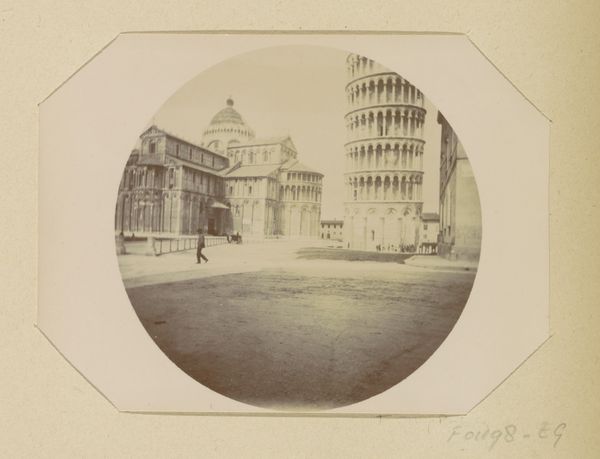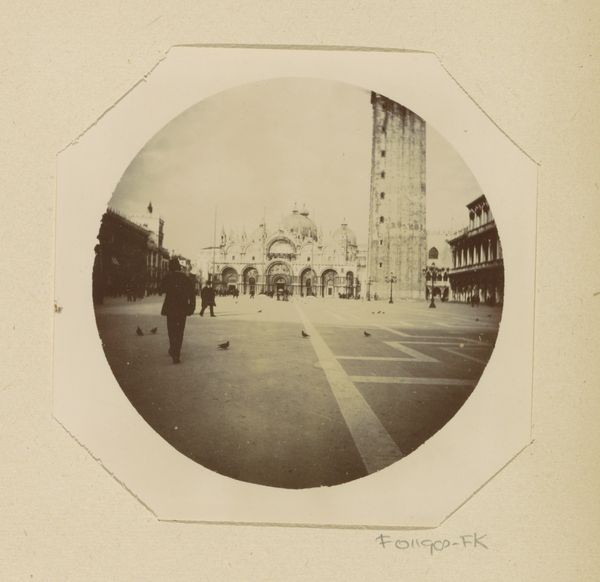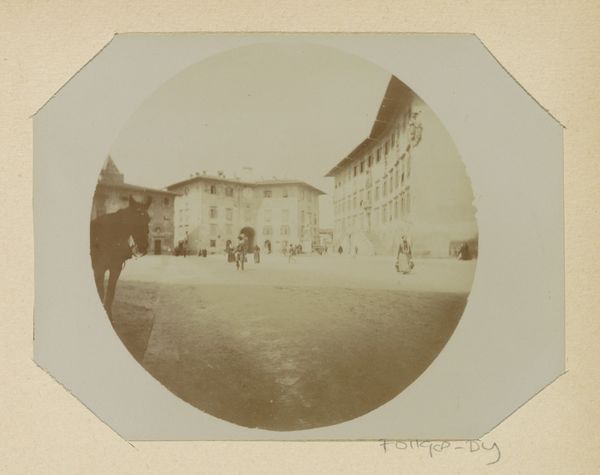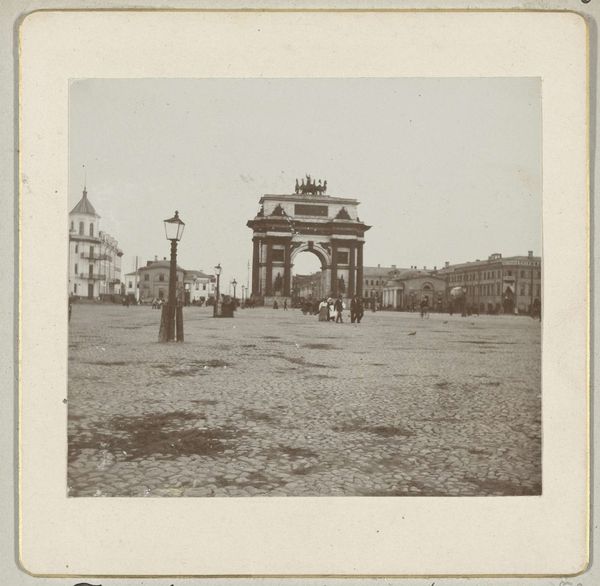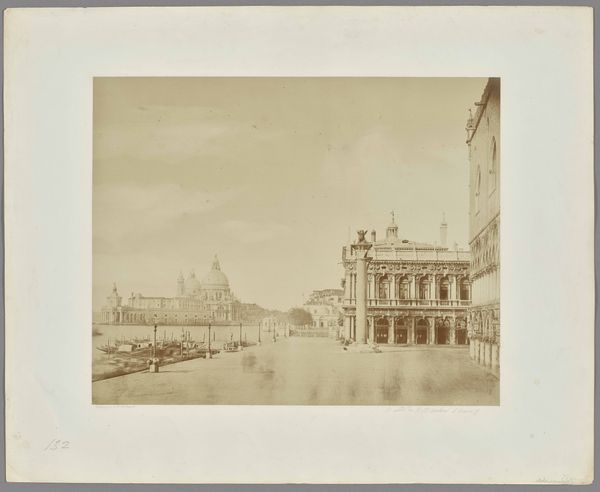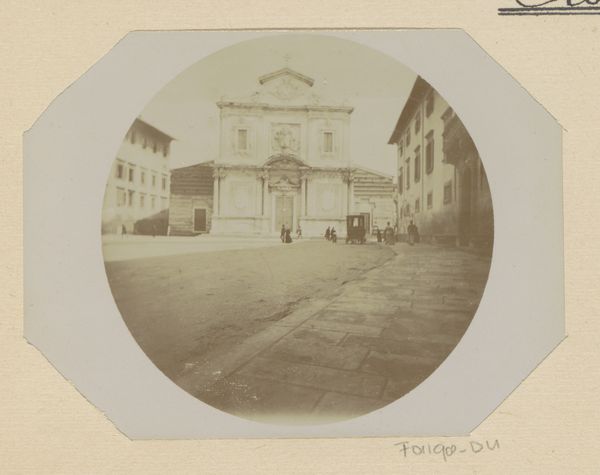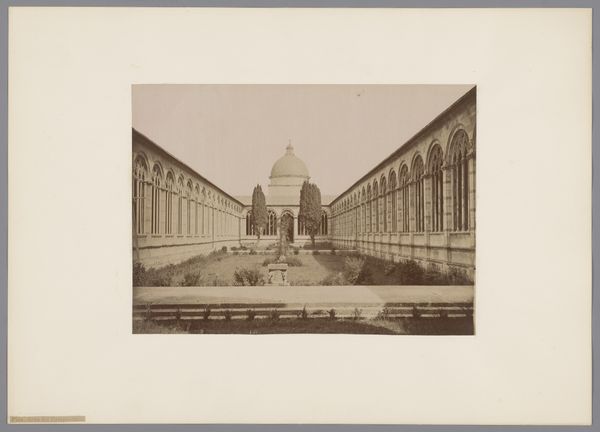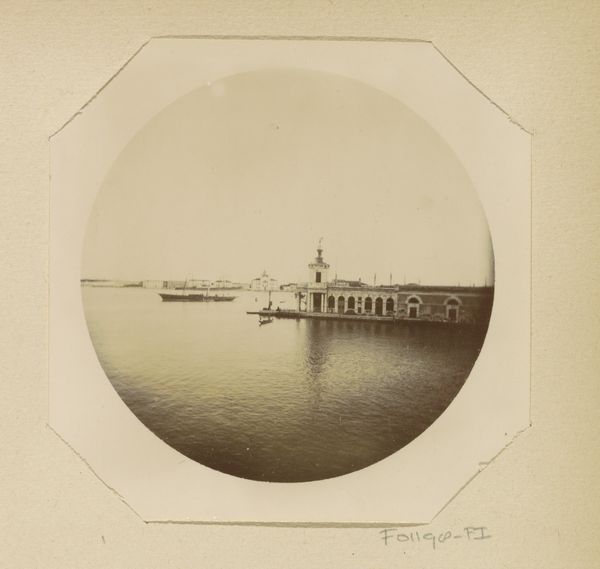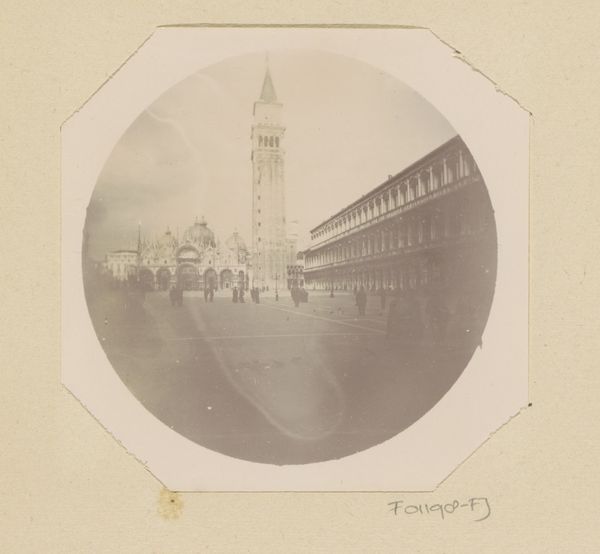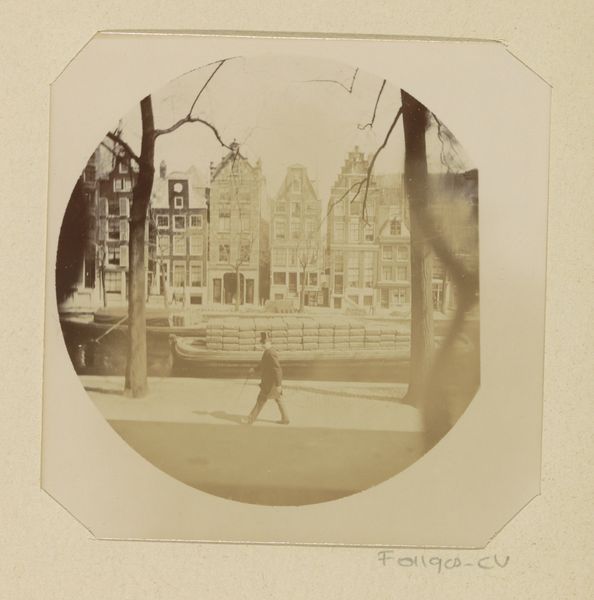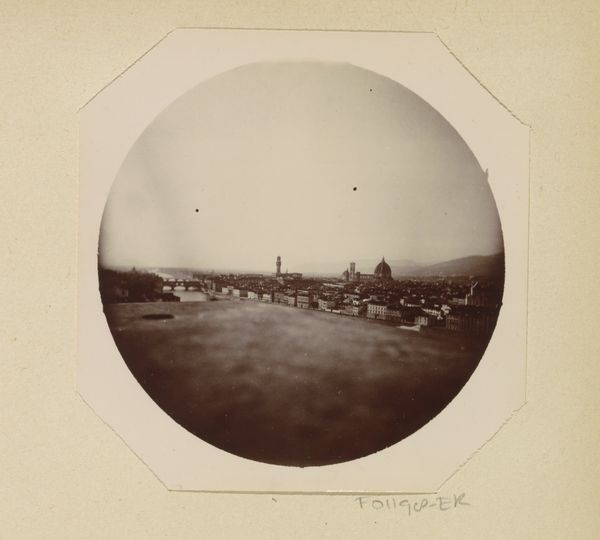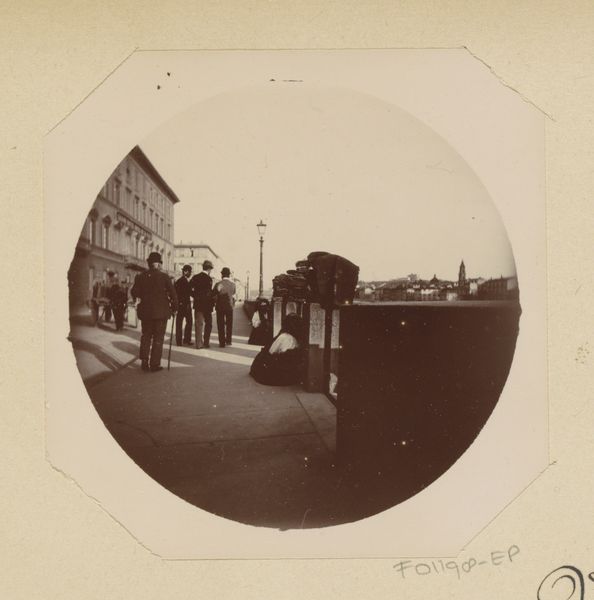
photography, gelatin-silver-print
#
pictorialism
#
landscape
#
photography
#
historical photography
#
gelatin-silver-print
#
19th century
#
cityscape
Dimensions: height 99 mm, width 100 mm
Copyright: Rijks Museum: Open Domain
This photograph of the Baptistery of Pisa was taken by Johanna Margaretha Piek, likely in the late 19th or early 20th century, using a process involving light-sensitive chemicals on paper. The sepia tones and soft focus are characteristic of early photographic prints, where the artist's hand in the darkroom played a crucial role in the final image. Think of Piek, carefully manipulating the chemicals to bring forth this particular view. What's interesting is how photography democratized image-making. Suddenly, capturing a famous architectural site didn't require the skills of a painter or engraver. It opened up the possibility for wider audiences to engage with art and culture. The image then becomes a commodity, a souvenir of travel, available for mass consumption. Piek's photograph is not just a record of a place; it's a testament to how new technologies reshaped our relationship with art, labor, and access.
Comments
No comments
Be the first to comment and join the conversation on the ultimate creative platform.
